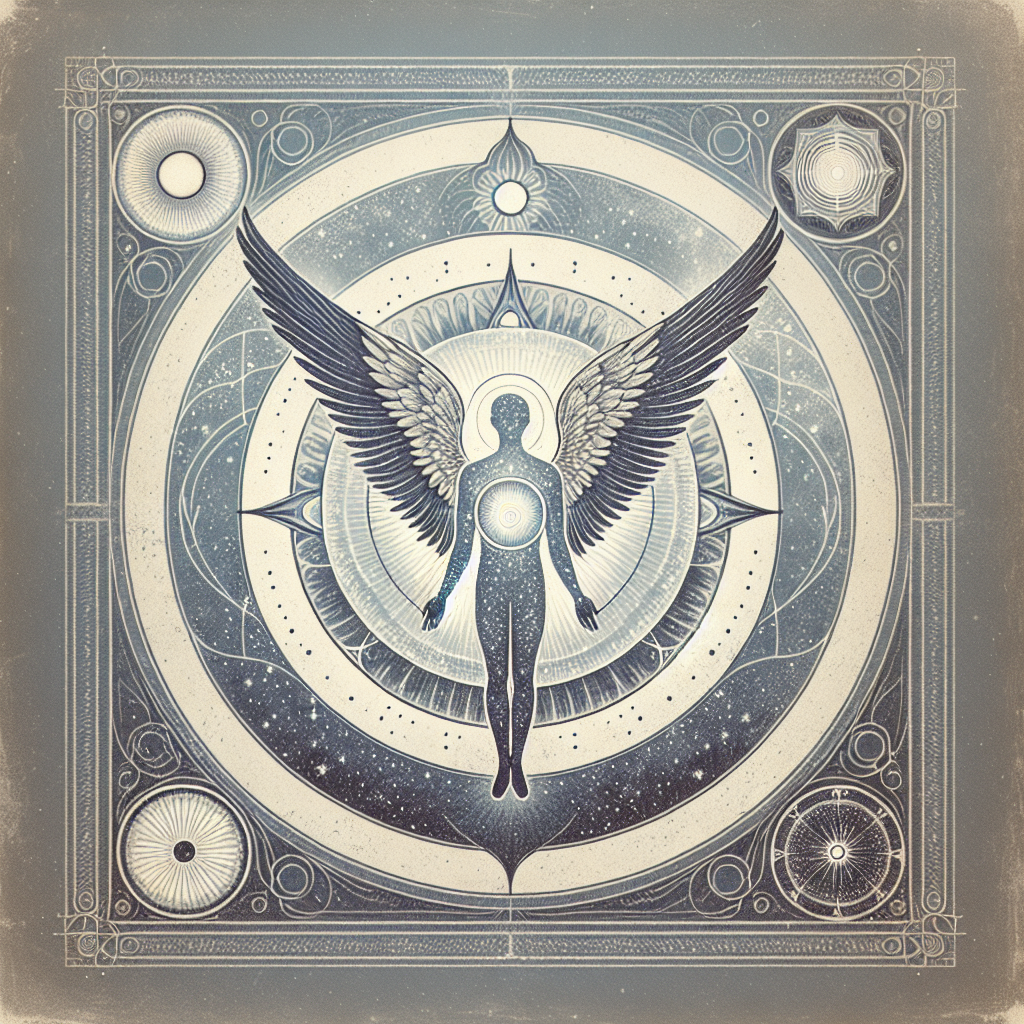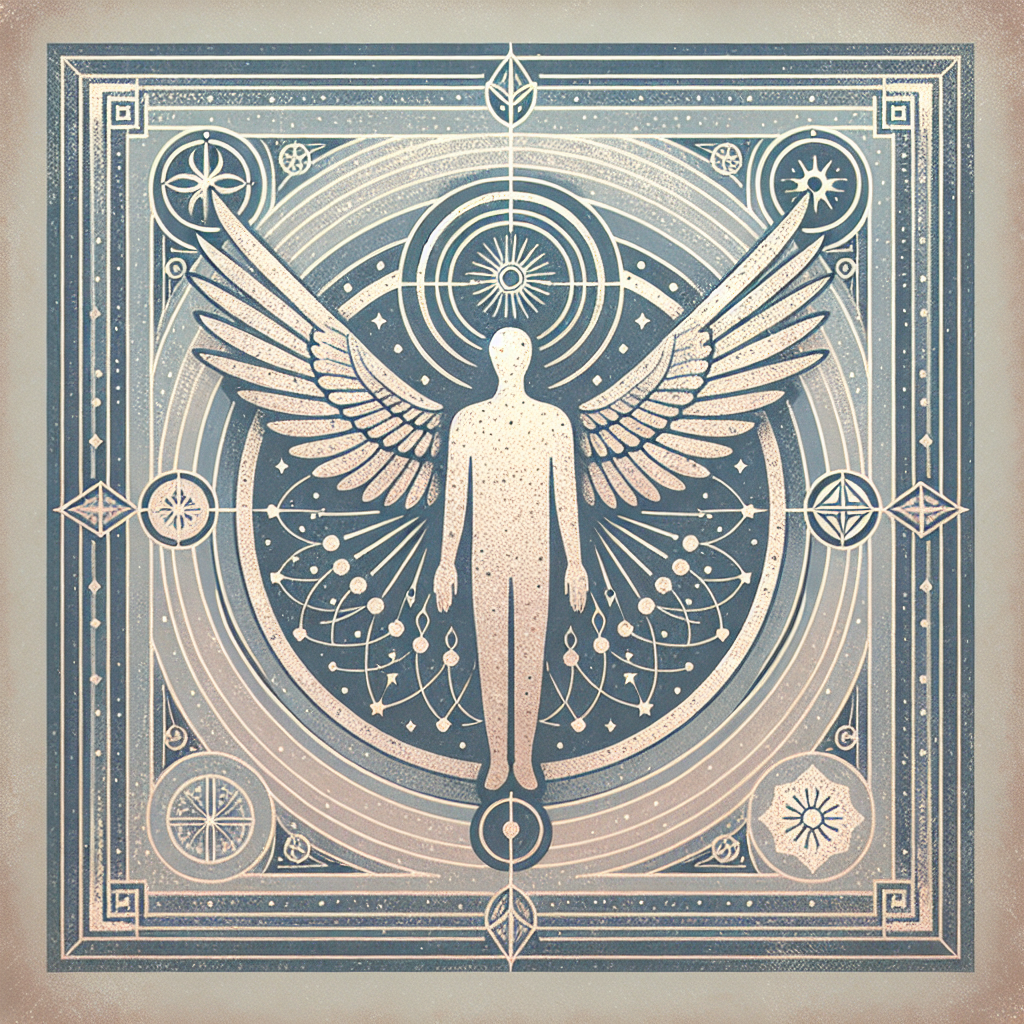Introduction
Angels (Hebrew: mal’akh, מלאך; Greek: ángelos, ἄγγελος; Arabic: malak, ملك; plural malāʾika, ملائكة) are divine messengers and agents in Jewish, Christian, and Islamic scriptures and traditions. The core meaning across these languages is “messenger,” and in the Hebrew Bible and Greek New Testament the same words can also denote human envoys, which introduces terminological ambiguity in interpretation. The popular image of winged beings—often bathed in light in later art—crystallizes much later than the earliest texts, which emphasize role and function over form. Scholarly treatments therefore begin with language, genre, and historical setting before moving to later iconography and systematized hierarchies. [1]
Who They Are & Where They Come From
The earliest strata of the Hebrew Bible portray God’s “messenger of the LORD” (mal’akh YHWH), a figure who delivers warnings, guidance, or rescue and sometimes speaks with divine authority. Because mal’akh can mean either a human or a supernatural envoy, exegetes must read the surrounding narrative carefully to determine status. Over time, particularly in postexilic and Second Temple literature, angels acquire more clearly differentiated identities—named figures such as Michael and Gabriel—and are depicted as members of a celestial court engaged in praise, protection, and governance. [1] Second Temple Jewish apocalyptic literature is decisive in elaborating angelic roles. The Book of the Watchers (1 Enoch 1–36), composed in the third to second centuries BCE, tells of rebellious angels (“Watchers”) whose illicit descent and instruction in forbidden arts explain human violence and corruption. This tradition, which expands on Genesis 6:1–4, influenced Jewish and Christian thought about the origins of evil and the ordering of the heavens. Its reception—varied across communities and eras—shaped attitudes toward angelic knowledge, ritual authority, and the boundary between legitimate and illicit mediation. [2] Christian sources inherit this Jewish angelology and extend it within emerging theological and ecclesial debates. Late antique writers treated angels as exemplars for liturgy, models for ascetic life, and keys for scriptural interpretation. Fourth- and fifth‑century authors such as Evagrius of Pontus and Augustine of Hippo articulated sophisticated theories about angelic nature and cognition while also using angels rhetorically to define Christian identity and authority. This period shows intense experimentation before later syntheses—like the hierarchical nine orders in the tradition attributed to Pseudo‑Dionysius—became influential points of reference. [3] In Islam, belief in angels is a pillar of faith. The Qur’an refers to angels frequently and names Jibrīl (Gabriel) as the conveyor of revelation to Muhammad and Mīkāl (Michael) among the exalted angels; interpretive traditions (tafsīr) and hadith literature expand their biographies and duties. Classical compilations, notably Jalāl al‑Dīn al‑Suyūṭī’s fifteenth‑century al‑Ḥabāʾik fī akhbār al‑malāʾik, catalog reports about major angels (e.g., Isrāfīl, the trumpet‑blower; the recording angels; the angel of death) and organize a wide range of teachings into a coherent angelology. Modern scholarship uses such collections to map early and medieval Muslim beliefs about angelic names, appearances, and functions. [4]
Powers & Roles
- Messenger and interpreter. Across scriptures, Angels carry divine messages, interpret visions, and guide prophets. Gabriel’s announcements—to Daniel in Judaism and to Zechariah and Mary in Christianity—exemplify this role; in Islam, Jibrīl communicates the Qur’an and instructs the Prophet in ritual practice. The mediatory function is the conceptual core from which later elaborations arise. [1][4]
- Worship and courtly service. Many texts place Angels in a celestial council or court engaged in continuous praise. In Second Temple sources and Christian liturgy, this imagery underwrites the sanctity and structure of worship on earth, often evoking themes of grace in later interpretation. Late antique Christian authors explicitly linked the organization of church ritual and clerical authority to angelic models, framing liturgy as participation in heavenly praise. [3]
- Guardianship and guidance. Angels serve as guardians and guides for individuals and communities. Late antique monastic literature speaks of “companion angels” who guide ascetics and shape moral imagination; the motif is less about metaphysical speculation and more about training dispositions within communities. [3] Islamic traditions, meanwhile, describe angels who accompany and protect believers, most systematically the kirāman kātibīn, recording each person’s deeds, a duty that underscores moral accountability. [4]
- Cosmic order and natural phenomena. Apocalyptic and mystical texts sometimes assign Angels to elements, stars, or nations, presenting them as administrators of cosmic order under divine sovereignty. This “bureaucratic” vision appears in Jewish apocalypses and is echoed in Christian theological reflection about providence. Islamic hadith literature likewise preserves reports of angels associated with rain, wind, or mountains, contributing to a pan‑angelic view in which angelic activity pervades the world’s operations while remaining fully dependent on God. [2][3][4]
- Judgment and eschatology. Angels participate in judgment as a cross‑cutting theme. In apocalyptic Judaism and Christianity, angels execute divine judgments and separate righteous from wicked. Late antique Christian preaching and catechesis used angelic judgment scenes to form moral consciousness and situate believers within salvation history. In Islam, angels question the dead (Munkar and Nakīr in post‑prophetic reports), take souls at death (Malak al‑Mawt), and accompany the events surrounding resurrection and reckoning; scholars analyze these traditions to understand theological debates on intercession, accountability, and the unseen realm. [3][4]
- Instruction and illicit knowledge. The Watchers myth frames Angels as both transmitters of wisdom and potential sources of dangerous instruction when boundaries are crossed. This duality fueled Jewish and Christian reflection on the legitimacy of angelic mediation and the discernment needed to distinguish true revelation from deceptive lore. The motif influenced Christian demonology and polemics but also fostered caution in invoking angels within ritual practice. [2]
How Different Cultures See Them
Judaism. While the Hebrew Bible’s messengers often serve immediate narrative purposes, Second Temple literature distinguishes multiple ranks and names (Michael, Gabriel, Raphael, Uriel), and the Dead Sea Scrolls reflect a community life oriented around heavenly liturgy and angelic warfare motifs. Rabbinic texts both regulate interest in angels—warning against speculation detached from Torah—and preserve rich lore about their roles in creation and revelation. Scholarship emphasizes how apocalyptic imagination and liturgical practice mutually shaped angel beliefs in this period. [2] Christianity. Early Christians extended Jewish angel traditions while situating them within Christology and ecclesiology. Late antique authors used angels to negotiate questions of scriptural interpretation (how Christ is found in the Law and Prophets), to model communal discipline, and to underwrite emerging conceptions of sanctity and office. The famous nine‑order hierarchy—seraphim, cherubim, thrones; dominions, virtues, powers; principalities, archangels, angels—became a common map for later medieval theology and art, yet historians note that fourth–fifth century discourse was more fluid and varied than later systematizations suggest. [1][3] Islam. The Qur’an presupposes a well‑populated unseen realm staffed by obedient angels who do not rival God but enact divine commands. Beyond Jibrīl and Mīkāl, later reports discuss Isrāfīl (often associated with the eschatological trumpet), the bearers of the Throne, guardians of Paradise and Hell, and the recording angels. Scholars analyzing al‑Suyūṭī’s compilation show how hadith clusters create a coherent angelology touching ritual, ethics, and cosmology, and they track debates about issues like whether angels can err, how they are embodied, and how they interact with humans. [4] Points of convergence and divergence. All three traditions portray angels as created, superhuman servants of the one God who bridge the gap between divine transcendence and human finitude. Differences arise in how strongly angels are individualized and ranked, the degree to which speculation is encouraged or restrained, and the roles angels play in communal authority and ritual. Jewish apocalypticism built expansive angelic bureaucracies; Christian late antique writers drew on angels to articulate ascetic ideals and to craft liturgical identities; Islamic hadith systematized angelic functions within a comprehensive moral and eschatological framework. [1][2][3][4]
What We Know Today
Modern scholarship treats angels as a comparative category that illuminates how communities think about mediation, agency, and order. Three lines of inquiry dominate:
- Reception and transformation. Studies of the Watchers tradition show how a compact myth generated extensive reflection on evil, knowledge, and ritual boundaries across Jewish and Christian communities. Tracing this reception clarifies why some angelic lore became canonical while other material remained marginal or polemical. [2]
- Social and rhetorical functions. Late antique Christian sources demonstrate that angels were not only metaphysical entities but also conceptual tools for shaping practice. Appeals to angels justified liturgical forms, framed biblical reading strategies, and encouraged ascetic ideals like vigilance and purity. Angels helped Christians imagine communal roles and negotiate authority in a changing religious landscape. [3]
- Systematization and everyday piety. Islamic scholarship on al‑Suyūṭī and related compilations shows how hadith about angels organize everyday ethics—through recording deeds, guarding believers, and attending rituals—while also mapping the unseen order. This systematization links cosmology with accountability and permeates devotional life. [4]
Terminological clarity remains crucial. Because “angel” in biblical languages can denote both human and celestial messengers, responsible interpretation attends to grammar, narrative context, and intertextual echoes. Scholars also note that later hierarchical and pictorial traditions can retroject assumptions onto earlier texts; comparisons across periods must therefore be careful and precise. [1][3] Contemporary experiences and claims. Many people report encounters with angels or angelic protection. From a historical‑critical perspective, such testimonies are sources for understanding religious experience and community discourse rather than empirical demonstrations. Robust clinical or experimental evidence verifying angelic intervention does not exist; claims are evaluated within theology, anthropology, and psychology rather than laboratory science. This evidentiary distinction does not dismiss lived experience but situates it appropriately within the study of religion. [1] Finally, across Judaism, Christianity, and Islam, Angels function as disciplined language for God’s action—affirming that the transcendent communicates, guides, and judges without diminishing divine uniqueness. Whether portrayed as liturgical choirs, vigilant guardians, or bearers of revelation, Angels mark the interface where the unseen meets history and where communities learn to speak of what exceeds ordinary sense, fostering awareness, connection, and change. [1][2][3][4]
Sources
[1] David Albert Jones, Angels: A Very Short Introduction, 2011. Concise, cross‑tradition overview of angelic terminology, history, and hierarchies; useful for definitions and comparative framing. https://doi.org/10.1093/actrade/9780199547302.001.0001 [2] Annette Yoshiko Reed, Fallen Angels and the History of Judaism and Christianity, 2005. Traces the Watchers myth’s development and reception across Jewish and Christian sources. https://doi.org/10.1017/CBO9780511499104 [3] Ellen Muehlberger, Angels in Late Ancient Christianity, 2013. Analyzes fourth–fifth century Christian discourse on angels in liturgy, exegesis, and asceticism. https://doi.org/10.1093/acprof:oso/9780199931934.001.0001 [4] Stephen R. Burge, Angels in Islam: Jalāl al‑Dīn al‑Suyūṭī’s al‑Ḥabāʾik fī akhbār al‑malāʾik, 2012. Critical study and translation illuminating angelology in Qur’an, hadith, and classical theology. https://doi.org/10.4324/9780203144978

